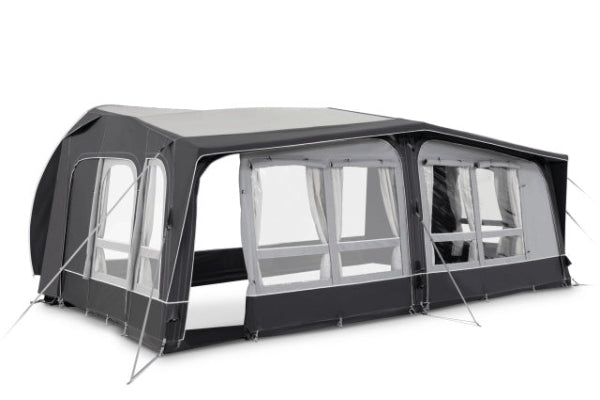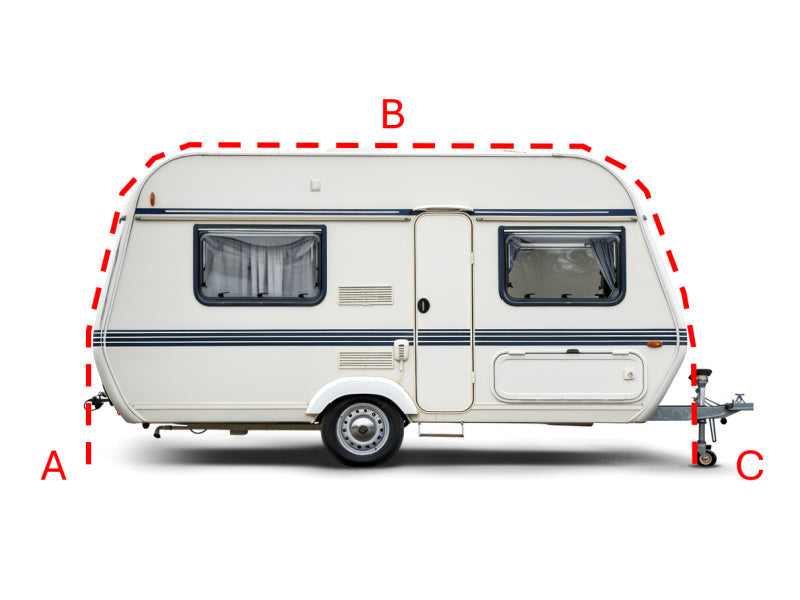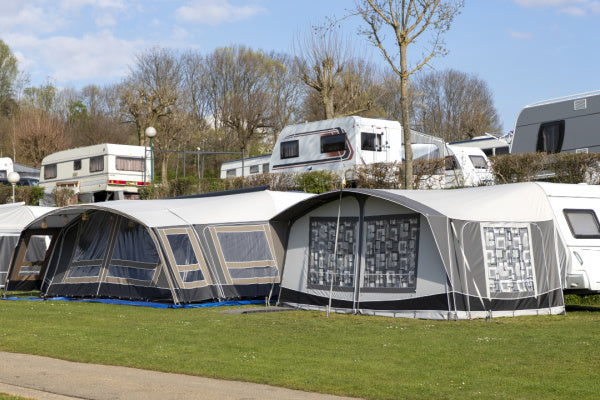Can Caravan Awnings Be Recycled? Your Guide
Stuck with an old caravan awning gathering dust in the garage? Whether it's weathered from countless camping trips or simply ready for retirement, there's good news. Caravan awnings can be recycled, and there are more options available than most people realise.
Recycling Caravan Awnings
The world of caravan awning recycling has evolved significantly over the past decade. What once might have ended up in landfill can now be transformed into new products, helping reduce environmental impact and support sustainable manufacturing.

Modern recycling techniques have made it possible to process nearly every component of a caravan awning. The key lies in understanding what materials are involved and how to prepare them for recycling.
Recyclable Materials
Caravan awnings combine multiple materials, each serving a specific purpose. Understanding these components makes the recycling process more straightforward and efficient.
The recyclability of each element varies, but most modern awnings incorporate materials specifically chosen for their ability to be processed and reused.
Polyester and Polycotton
The main fabric of caravan awnings typically consists of polyester or polycotton blends. These materials serve as the primary shelter component, protecting against rain, wind, and sun.
Polyester proves particularly recyclable, with specialised facilities capable of breaking it down into raw materials for new products. The process involves shredding the fabric into fibres, which manufacturers can then spin into new textiles.
Polycotton requires a different approach. The blend of natural and synthetic fibres needs separation before recycling. Modern techniques use chemical processes to split these materials effectively.
Before recycling fabric components, they need proper cleaning and preparation. Remove any non-fabric attachments such as zippers or Velcro strips. These metal and plastic components have their own recycling streams.
Aluminium Frames
Aluminium framework represents one of the most valuable recyclable components in caravan awnings. The metal maintains its properties through multiple recycling cycles, making it a particularly sustainable choice.
The recycling process for aluminium proves remarkably efficient. It requires just 5% of the energy needed to produce new aluminium from raw materials. This energy efficiency makes aluminium recycling particularly attractive from an environmental perspective.
Proper preparation of aluminium frames involves dismantling them into manageable sections. Remove any plastic end caps or connectors, as these require separate recycling processes.
Recycling Programs
Manufacturer recycling programs have gained popularity as environmental awareness grows. These initiatives often provide the most straightforward path to responsible disposal.

Many leading awning manufacturers now operate take-back schemes. These programs accept old products regardless of condition, ensuring proper recycling of all components.
Some retailers offer trade-in programs, providing discounts on new purchases when returning old awnings. This approach encourages responsible disposal while making new, more efficient products more accessible.
Local Recycling Centres
Local recycling facilities play a crucial role in processing caravan awnings. These centres often accept various components, though requirements vary by location.
Before transporting an awning to a recycling centre, contact them to understand their specific requirements. Some facilities prefer materials separated, while others handle sorting on-site.
Many centres provide guidance on preparation, ensuring materials enter the correct recycling streams. This preparation might include removing hardware or separating different types of materials.
Specialised Recycling Facilities
Dedicated camping equipment recycling facilities have emerged to handle specific outdoor gear. These specialised centres understand the unique materials and construction methods used in caravan awnings.
Such facilities often provide collection services, making recycling more convenient for owners. Their expertise ensures maximum material recovery and proper processing of all components.
These centres typically maintain relationships with manufacturers, helping close the recycling loop. This connection ensures recovered materials find their way back into new products effectively.
Repurposing and Upcycling
Before choosing recycling, consider giving the awning a second life through repurposing. Creative reuse often provides the most environmentally friendly solution, extending the material's useful life.

Creative Uses for Old Awnings
The durable materials used in caravan awnings suit various practical applications. The waterproof fabric makes excellent covers for outdoor furniture or equipment.
Larger sections can transform into effective garden shade sails. The material's weather-resistant properties prove perfect for this application, providing protection from sun and rain.
Aluminium frames offer structural possibilities for garden projects. Their lightweight yet sturdy nature makes them ideal for creating greenhouse frameworks or garden trellises.
Smaller fabric sections suit craft projects. The material can become practical storage bags, protective covers, or even outdoor cushions.
The key to successful repurposing lies in careful dismantling. Take time to separate components cleanly, preserving their utility for new applications.
Final Thoughts
Responsible disposal of caravan awnings matters more than ever. Whether choosing recycling or repurposing, taking action helps reduce environmental impact.
Remember to check local options first. Many communities offer specific programs for outdoor equipment recycling. When in doubt, contact local recycling facilities for guidance.
For awnings still in usable condition, consider donation or resale. Local camping groups or charity organisations often welcome such contributions, extending the product's life while helping others enjoy outdoor adventures.
Other content you might like:
- How to extend a caravan awning
- Should caravan awning legs be up or down?
- Can you put a caravan awning up in the rain?
- Do mud flaps go in or out of awning?
- How to stop my caravan awning from sagging?
- How do I stop my awning from blowing away?
- Can caravan awnings cause problems?
- Can caravan awnings cause damp problems?
- Can caravan awnings affect windows?
- Can caravan awnings affect the environment?





Leave a comment